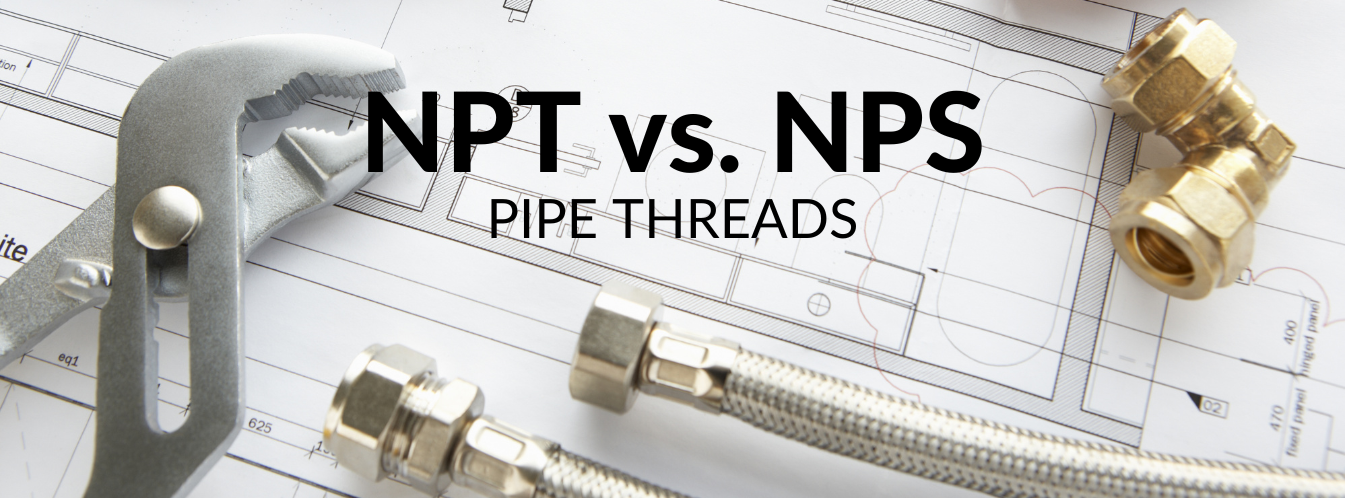Get PRO Pricing
Get [PRO] Pricing

In terms of bathroom showers, installations rely heavily on the correct choice and understanding of pipe threads and sizes. NPT and NPS are terms frequently encountered when dealing with plumbing fixtures, and they have distinct characteristics that set them apart. There are also a few other connection abbreviations to keep in mind when shopping for the correct showerhead, including G, BSPP, and BSPT.
NPT, or National Pipe Thread, is a standardized thread type used primarily in the United States for creating a tight seal in plumbing connections. It follows a tapered thread design where the diameter of the threads increases or decreases along the length of the fitting. NPT threads are measured in inches and follow a naming convention denoted by fractions or sizes, with ½” diameter being the most common connection size for a shower head.
In shower installations, NPT connections are commonly found on pipes, showerheads, and other fixtures. These threads form a seal through their tapered design, requiring the use of thread-sealing tape or pipe sealant to prevent leaks and ensure a watertight connection. The tightening of NPT fittings creates a secure joint, crucial for maintaining the integrity of the plumbing system.
The standard NPT size is ½-14, which means it is ½” in diameter, with 14 threads per inch.
NPS, or National Pipe Straight, and more refers to the standard size designation used to indicate the approximate inside diameter of a pipe. Unlike NPT, NPS does not involve threading specifics but rather represents a standardized pipe size. NPS is used to classify pipes based on their nominal size, allowing for easier identification and compatibility when selecting fittings and fixtures. This connection type also goes by NPSM (National Pipe Straight Mechanical) for mechanical joints. The standard outer diameter (O.D.) for pipes most commonly used for the shower is ½”and ¾”.
In shower installations, NPS plays a critical role in determining the compatibility of different components. Understanding the NPS of pipes and fittings helps ensure they are compatible and can be connected seamlessly, contributing to a properly functioning shower system.
Female threads are located on the inside of the pipe, while male threads are located on the outside. To measure female pipe threads, use a ruler to determine the diameter starting at the widest point of the inside of the pipe. For male threads, measure the outside diameter at the widest point of the threads.
Thread Design: The primary difference between NPT and NPS lies in their thread design. NPT has tapered threads, while NPS refers to straight threads.
Sealing Requirements: NPT threads require the use of sealants or tape to create a tight seal, whereas NPS does not as it provides a tight seal by holding the male threads against a washer at the end of the female threads, although sealing tape is not required, it does provide an extra safety measure in case the washer has deteriorated.
Compatibility and Installation: Ensuring compatibility between NPT-threaded fittings and NPS pipes is important for a proper fit. Matching threads and sizes helps to prevent leaks and ensure a secure connection.
Standardization: Both NPT and NPS adhere to specific standards set by organizations like the American National Standards Institute (ANSI) and others to maintain uniformity in plumbing systems.
IPS connections are used in combination with a washer to form a seal.
The standard IPS sizes are ½” and ¾”.
G, BSPP, and BSPT are all British Standard Pipe fitting connections, which is the standard sizing adopted worldwide for pipe fitting except in North America. BSPP is equivalent to NPS and BSPT is equivalent to NPT. The letter G is used to denote the fitting as BSPP.


